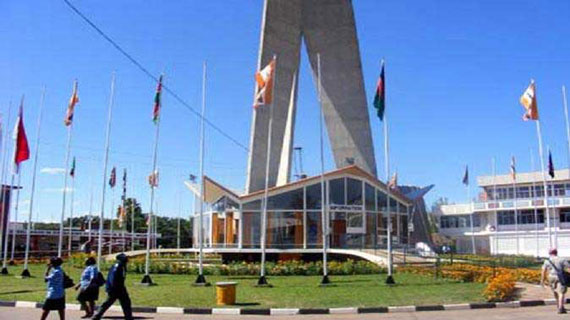Businesses need to ride the results of policies
The election results are now out and everyone knows who has won in both the Presidency and Parliament, and so has a good idea how the Government will continue implementing the policies it successfully implemented over the last five years.
So there will be few surprises and the changes will rather be an intensification of implementation although with some new systems brought in.
This is where opportunities open up for more participation by local companies, and more manufacturers taking advantage of the rapidly growing rural economy to find new products and new markets.
President Mnangagwa has yet to name his Cabinet for his second term. He needs to be sworn in first and that probably comes after the deadline for any legal challenges and having those challenges dealt with by the courts. But considering the evidence available and the observer reports, there are unlikely to be any drastic changes.
The business world needs to move as well, building better contacts with the Government. One policy we do know will continue will be the continued stress on rehabilitating old infrastructure and adding to it.
There has been in the past a tendency to seek external contractors for many of the major projects, but the great success of using local companies for the rebuilding of the Harare-Masvingo highway has, as President Mnangagwa has said, opened the Government’s eyes to the ability and competence of local companies.
So the local business sector can build on this. One areas is the construction of dams. This is likely to be accelerated.
While smaller and “farm dams” can obviously be handled by established contractors, we need to have more involvement of local companies in the design and construction of major dams.
This was done in the past, with Water Ministry engineers, local companies and local consulting engineers doing most of the design work and then doing the construction. We have now returned to having a good number of local engineers with experience as well as formal training, and should be able to do more.
Most of the very large dams commissioned, or now being built, in recent years had foreign companies, but there has been growing sub-contract work from local firms and we need to get to the stage where the whole dam could be designed by Zimbabwean engineers, the design checked by local consultants, and the construction work done by local companies. Local engineering and construction companies should be making their pitch now for this to happen.
Another areas of growing low-hanging fruit arises from small-scale farmers. During the last five years the value of agricultural production more than tripled, and that is a lot of money that went to farmers.
Of course fertiliser and seed companies, along with suppliers of agricultural chemicals, have taken a slice of the extra money, but a lot has ended up in farmers hands and bank accounts.
The business sector needs to find out what farmers spend their money on. Those who drive through rural areas, or visit rural areas, are already seeing the main priorities, For example, most farming families see a reasonable house as a high priority.
So there is a rural building boom. A lot of the work and supplies come from small rural businesses and even the family itself.
But even here there are things that an innovative business can do. Most rural bricks are hand-moulded and hand fired. But there might be better and cheaper hand moulds that could be designed and marketed.
Firing bricks can be inefficient by less skilled makers, and again innovative companies might be able to figure out simple equipment that could allow a rural SME to use less wood, and perhaps other energy sources, to produce better bricks.
There are simple tests already available to test a brick, the simplest being to leave it in a bucket of water overnight and the next day seeing if the water is still clear and the brick still hard; a pile of mud in a dirty bucket of water cannot pass.
The creation of the SMEs that know what they are doing might require a package of the basic equipment and some sort of payment scheme, but then the opportunity now exists.
Other items, like window and door frames, are often supplies by small rural welding businesses, but they still need supplies. Roofing can generate some innovation.
One major material that must be trucked in is cement, and we are already seeing cement factories expanding and commissioning new equipment and now plans to build yet another factory in the Midlands. Manicaland suggests itself as another site, along with a town in the tobacco belt.
When the David Whitehead factories reopen shortly, after the new equipment being put in place by the new owner, there should be opportunities for clothing manufacturers to make suitable work clothes and leisure clothes for the expanding rural market. Quality and price will be critical factors, so again innovative and smart businesses are required.
There is not much that can be done locally to supply vehicles, and the rise of ownership of second-hand imported cars is rising fast as this is also a priority for rural households, but there is room for other transport innovations.
We used to make a basic bicycle in the country, before that business turned turtle, but there seems a potential market for some suitable bicycle that could be ridden by schoolchildren, especially secondary pupils who usually have longer distances.
The bikes will need to be marketed and affordable, but there used to be at the old white high schools in colonial times very large cycle sheds as a matter of course since many had to ride 10km to get to school through those low density suburbs.
Agricultural equipment is already manufactured in Zimbabwe, though sometimes imports win on quality or price and that needs to be fixed by some manufacturers.
Others have regional markets and know what they are doing. But there are ranges of simple mechanisation that can be tackled. For example some sort of mechanical hoe with an electrical motor recharged from a solar panel might be saleable.
Again manufacturers will have to know what the markets need to do and can afford, before they can design solutions that work in Zimbabwean conditions and then market these.
This means working with farmers and test groups on prototypes before moving into production, and making sure that the test farmers and test groups are totally honest and open in their feedback.
Once a lot of these basics have been sorted out, then rural families will be looking for more of the sort of goods and services that urban people want, although they will probably put solar power higher.
Modest solar installations are already selling well, from the US$20 or so rechargeable lamps up to the 100W solar panels that come with a couple of lights and a range of charging points for phones and other equipment.
Again we need manufacturers who know the market and have excellent relationships with the rural shopkeepers and wholesalers, so they can keep tabs on what sort of products are changing in demand and can get a grip on packaging and packet sizes that are most in demand.
Expanding shelf space, better marketing and delivery trucks all seem to open new opportunities to tap the major new markets that are now opening up in rural areas and will continue to expand rapidly over the next five years.
When we talk about a US$10 billion farming economy, and that target is likely to be set and reached in the next five years, businesses need to have the products, services, equipment and the like that can help create that economy, and then tap the huge market that will be created..
-ebusinessweekly











